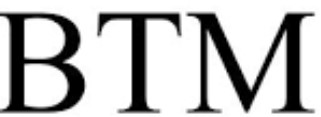Managing inventory effectively is crucial for the success of any retail store. Efficient inventory management not only minimizes waste and increases profitability but also enhances customer satisfaction. In this article, we explore some of the best practices to optimize your store’s inventory management and boost profits.
The Importance of Accurate Forecasting
Accurate forecasting is the backbone of efficient inventory management. By predicting future demand, you can ensure that the store has the right products in the right quantity at the right time. To improve your forecasting accuracy, consider factors such as seasonality, market trends, and historical sales data.
The Just-In-Time Inventory System
The Just-In-Time (JIT) inventory system is a popular inventory management technique that aims to minimize stock on hand while ensuring constant product availability. The concept is to purchase and receive goods only as they are needed, reducing storage costs and the risk of spoilage or obsolescence. Implementing a JIT system requires accurate forecasting and good relationships with suppliers to ensure timely deliveries.
Effective In-Store Merchandising
Maintaining an appealing in-store layout and display is also an important factor in inventory management. Proper product placement, signage, and integration of point of purchase display can enhance customer experience, increase sales, and efficiently move inventory. Understanding your store’s layout and customer behavior will aid you in creating an effective merchandising strategy.
Establishing a Re-Order Point
Setting a re-order point for each product helps ensure that you maintain sufficient stock levels. The re-order point is the level at which inventory is reordered, taking into account lead time, safety stock, and the time it takes to replenish the items. Regularly review and update your re-order points to optimize the inventory levels of each product.
Proper Training for Employees
Providing the necessary training for store employees helps ensure the success of your inventory management techniques. Staff should be familiar with various inventory management systems, warehousing best practices, and how to troubleshoot any inventory discrepancies. Training will not only empower your employees but also help maintain accuracy and efficiency in inventory management.
Regular Stock Audits
Conducting regular stock audits is essential for maintaining an accurate record of your inventory levels. This process will help identify discrepancies between the actual and recorded inventory, allowing you to address issues and prevent losses. There are multiple ways to perform a stock audit, such as cycle counting, which involves counting a small portion of the inventory daily or weekly, or an annual physical count.
The Role of Vendor Relationships
Establishing strong relationships with your suppliers is a key aspect of effective inventory management. A good relationship can lead to faster deliveries, more favorable payment terms, and the flexibility to quickly adapt to changes in demand. Regular communication with your vendors and a willingness to collaborate on inventory management strategies can lead to significant improvements in your store’s profitability.
Implementing an Inventory Management System
Using a reliable inventory management system can streamline your inventory processes, reduce human error, and save time. Many systems offer valuable features such as real-time stock tracking, sales data analytics, and re-order alerts. Research different solutions to find one that best suits your store’s needs.
Optimizing Storage Space
Efficient use of storage space is important for reducing costs and increasing productivity. Ensure that your store’s storage space is organized in a manner that facilitates easy access, product visibility, and efficient dispatch processes. Evaluate your store layout and adopt best practices for warehouse and storage space management. Streamlining your storage methods can result in time savings and decreased operating costs.
First-In, First-Out (FIFO) Storage Method
Adhering to a FIFO storage method ensures that older inventory is sold before newer stock, reducing the risk of spoilage and obsolescence. This method is particularly important when dealing with perishable goods or products with a limited shelf life. Organize your storage areas to facilitate the FIFO method, with older items at the front and newer items at the back.
Analyzing Sales Data for Continuous Improvement
Regular analysis of sales data is vital for identifying and addressing inefficiencies in your inventory management strategy. Use this data to determine which products are performing well, which require more visibility in-store, and which may need further promotion. Continuously refining your inventory strategy based on sales data and customer feedback will help optimize your inventory levels and improve overall store performance.
Conclusion
Effective inventory management is essential for maximizing store profits. Employing accurate forecasting, implementing a proper inventory management system, and establishing strong vendor relationships are just a few techniques that can greatly enhance your store’s profitability. Regularly reviewing and optimizing your inventory management strategies will ensure long-term success and sustainable growth for your retail business.


